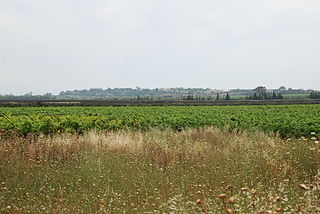 W
WThe Hebrew calendar, also called Jewish calendar, is a lunisolar calendar used today for Jewish religious observance, and as an official calendar of the state of Israel. It determines the dates for Jewish holidays and the appropriate public reading of Torah portions, yahrzeits, and daily Psalm readings, among many ceremonial uses. In Israel, it is used for religious purposes, provides a time frame for agriculture, and is an official calendar for civil holidays, alongside the Gregorian calendar.
 W
WAnno Mundi, abbreviated as AM or A.M., or Year After Creation, is a calendar era based on the biblical accounts of the creation of the world and subsequent history. Two such calendar eras have seen notable use historically:Since the Middle Ages, the Hebrew calendar has been based on rabbinic calculations of the year of creation from the Hebrew Masoretic Text of the bible. This calendar is used within Jewish communities for religious purposes and is one of two official calendars in Israel. On the Hebrew calendar, the day begins at sunset. The calendar's epoch, corresponding to the calculated date of the world's creation, is equivalent to sunset on the Julian proleptic calendar date 6 October 3761 BC. The new year begins at Rosh Hashanah, in Tishrei. Anno mundi 5782, or AM 5782 began at sunset on 6 September 2021 on the Gregorian calendar. The Byzantine calendar was used in the Eastern Roman Empire and many Christian Orthodox countries and Eastern Orthodox Churches and was based on the Septuagint text of the Bible. That calendar is similar to the Julian calendar except that its reference date is equivalent to 1 September 5509 BC on the Julian proleptic calendar. That would make the present year the 7530th year since the creation of the world.
 W
WBiblical literalist chronology is the attempt to correlate the theological dates used in the Bible with the real chronology of actual events. The Bible measures time from the date of Creation, but there is no agreement on when this was. Some of the better-known calculations include Archbishop James Ussher, who placed it in 4004 BC, Isaac Newton in 4000 BC, Martin Luther in 3961 BC, the traditional Hebrew calendar date of 3760 BC, and the traditional Greek Orthodox date, based on the Septuagint, of 5509 BC. To the foundation of the Temple of Solomon the passage of time is measured by simple addition of from the Creation; for later periods it measures time by the reigns of kings, but the data is conflicting and there is no agreement on how to resolve the problems.
 W
WThe sabbath year, also called the sabbatical year or shǝvi'it, or "Sabbath of The Land", is the seventh year of the seven-year agricultural cycle mandated by the Torah in the Land of Israel and is observed in Judaism.
 W
WThe Jubilee is the year at the end of seven cycles of shmita and, according to biblical regulations, had a special impact on the ownership and management of land in the Land of Israel. According to the Book of Leviticus, Hebrew slaves and prisoners would be freed, debts would be forgiven, and the mercies of Yahweh would be particularly manifest.
 W
WKiddush Levanah is a Jewish ritual, performed outside at night, in which a series of prayers are recited to bless the new moon.
 W
WShabbat or the Sabbath, also called Shabbos by Ashkenazim, is Judaism's day of rest on the seventh day of the week—i.e., Saturday. On this day, religious Jews remember the biblical stories describing the creation of the heaven and earth in six days and the redemption from slavery and The Exodus from Egypt, and look forward to a future Messianic Age. Since the Jewish religious calendar counts days from sunset to sunset, Shabbat begins in the evening of what on the civil calendar is Friday.
 W
WThe sabbath year, also called the sabbatical year or shǝvi'it, or "Sabbath of The Land", is the seventh year of the seven-year agricultural cycle mandated by the Torah in the Land of Israel and is observed in Judaism.